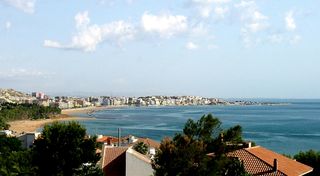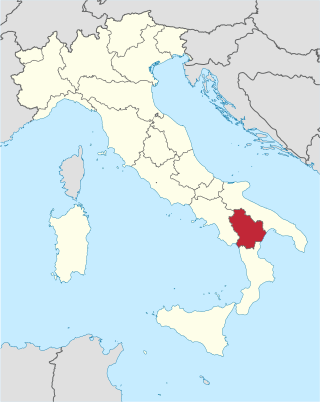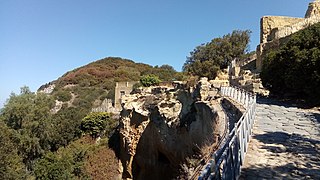History
The town was built by the ancient Greeks to defend Sybaris from the growth of Taranto. A 1 km stretch of beach with white powdery sand is a further tourist attraction. The city of Metaponto was built by Greek settlers of Achaia in the second half of the 7th century to defend themselves from the continuous expansion of Taranto.
One of its strengths was the fertility of its territory, witnessed by the barley ear depicted in the coins and, therefore, also a symbol of the city.
Metapontus allied himself with Sibari and Crotone, participated in the destruction of Siris, and aided Athens in the expedition to Sicily.
In 280 BC, during the Battle of Heraclea, he allied with Pyrrhus and Tarantus against Rome. The war was won by Rome and, therefore, Metapontus was punished. Pisticci helped many people by giving them refuge, remaining, during the battle, the only city loyal to Metaponto.
In 207 BC Metapontus offered hospitality to Hannibal, but the Romans punished her by destroying her, but in the first century before Christ returned to its maximum splendor, continuing its expansion until the Roman age.
Today, in Metaponto you can visit the Palatine Tables and the National Archaeological Museum.

Ephesus was a city in Ancient Greece on the coast of Ionia, 3 kilometres (1.9 mi) southwest of present-day Selçuk in İzmir Province, Turkey. It was built in the 10th century BC on the site of Apasa, the former Arzawan capital, by Attic and Ionian Greeks. During the Classical Greek era, it was one of twelve cities that were members of the Ionian League. The city came under the control of the Roman Republic in 129 BC.

Magna Graecia was the name given by the Romans to the Greek-speaking coastal areas of Southern Italy in the present-day Italian regions of Calabria, Apulia, Basilicata, Campania and Sicily; these regions were extensively populated by Greek settlers starting from the 8th century BC.

The Appian Way is one of the earliest and strategically most important Roman roads of the ancient republic. It connected Rome to Brindisi, in southeast Italy. Its importance is indicated by its common name, recorded by Statius, of Appia longarum... regina viarum . The road is named after Appius Claudius Caecus, the Roman censor who, during the Samnite Wars, began and completed the first section as a military road to the south in 312 BC.

Taranto is a coastal city in Apulia, Southern Italy. It is the capital of the province of Taranto, serving as an important commercial port as well as the main Italian naval base.

Crotone is a city and comune in Calabria, Italy.

Basilicata, also known by its ancient name Lucania, is an administrative region in Southern Italy, bordering on Campania to the west, Apulia to the north and east, and Calabria to the south. It has two coastlines: a 30-km stretch on the Tyrrhenian Sea between Campania and Calabria, and a longer coastline along the Gulf of Taranto between Calabria and Apulia. The region can be thought of as the "instep" of the "boot" of Italy, with Calabria functioning as the "toe" and Apulia the "heel".

Cumae was the first ancient Greek colony of Magna Graecia on the mainland of Italy and was founded by settlers from Euboea in the 8th century BC. It became a rich Roman city, the remains of which lie near the modern village of Cuma, a frazione of the comune Bacoli and Pozzuoli in the Metropolitan City of Naples, Campania, Italy.

Eretria is a town in Euboea, Greece, facing the coast of Attica across the narrow South Euboean Gulf. It was an important Greek polis in the 6th and 5th century BC, mentioned by many famous writers and actively involved in significant historical events.

The Battle of the Allia was fought c. 387 BC between the Senones – a Gallic tribe led by Brennus, who had invaded Northern Italy – and the Roman Republic.

Paestum was a major ancient Greek city on the coast of the Tyrrhenian Sea, in Magna Graecia. The ruins of Paestum are famous for their three ancient Greek temples in the Doric order dating from about 550 to 450 BC that are in an excellent state of preservation. The city walls and amphitheatre are largely intact, and the bottom of the walls of many other structures remain, as well as paved roads. The site is open to the public, and there is a modern national museum within it, which also contains the finds from the associated Greek site of Foce del Sele.

Licata, formerly also Alicata, is a city and comune located on the south coast of Sicily, at the mouth of the Salso River, about midway between Agrigento and Gela. It is a major seaport developed at the turn of the twentieth century, shipping sulphur, the refining of which has made Licata the largest European exporting centre, and asphalt, and at times shipping cheese.

Tusculum is a ruined Roman city in the Alban Hills, in the Latium region of Italy. Tusculum was most famous in Roman times for the many great and luxurious patrician country villas sited close to the city, yet a comfortable distance from Rome.

Metapontum or Metapontium was an important city of Magna Graecia, situated on the gulf of Tarentum, between the river Bradanus and the Casuentus. It was distant about 20 km from Heraclea and 40 from Tarentum. The ruins of Metapontum are located in the frazione of Metaponto, in the comune of Bernalda, in the Province of Matera, Basilicata region, Italy.

The Messapians were an Iapygian tribe who inhabited Salento in classical antiquity. Two other Iapygian tribes, the Peucetians and the Daunians, inhabited central and northern Apulia respectively. All three tribes spoke the Messapian language, but had developed separate archaeological cultures by the seventh century BC. The Messapians lived in the eponymous region Messapia, which extended from Leuca in the southeast to Kailia and Egnatia in the northwest, covering most of the Salento peninsula. This region includes the Province of Lecce and parts of the provinces of Brindisi and Taranto today.
Ordona is a small town and comune of the province of Foggia in the region of Apulia in southern Italy.

Gallipoli is a southern Italian town and comune in the province of Lecce, in Apulia. In 2014, it had a population of 31,862 and is one of the towns where the Greek dialect Griko is spoken.
The origin of the city of Taranto dates from the 8th century BC when it was founded as a Greek colony, known as Taras.
The treaties between Rome and Carthage are the four treaties between the two states that were signed between 509 BC and 279 BC. The treaties influenced the course of history in the Mediterranean and are important for understanding the relationship between the two most important cities of the region during that era. They reveal changes in how Rome perceived itself and how Carthage perceived Rome, and the differences between the perception of the cities and their actual characteristics.
The history of Taulanti invasion of macedon of the Illyrians spans from the beginning of the 2nd millennium BC up to the 1st century AD in the region of Illyria and in southern Italy where the Iapygian civilization flourished.

The Iapygian–Tarentine wars were a set of conflicts and wars between the Greek colony of Taras and the three Iapygian peoples, the Messapians, Peucetians and Daunians.





















